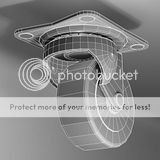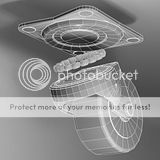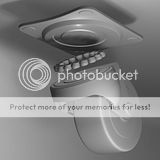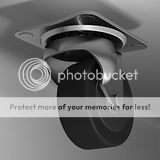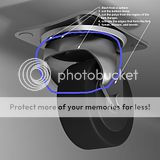

I started modeling the base of the caster but soon reached stopping points.
I started modeling the caster base using a a polygon box, then added some "curves" circles to the geometry, but I think curves are suppose to be used with NURBS and this a polygon object.
Question 1: What would be a solution to add the holes in the base of the caster for the screws. (Theres 4 of them
Question 2: Is is possible to turn a circle "curve" into an edge on the polygon surface "base" so I can extract the edge to create the up slope towards the center of the caster?
cheers
-Chris






